#brahmaviharas
Photo
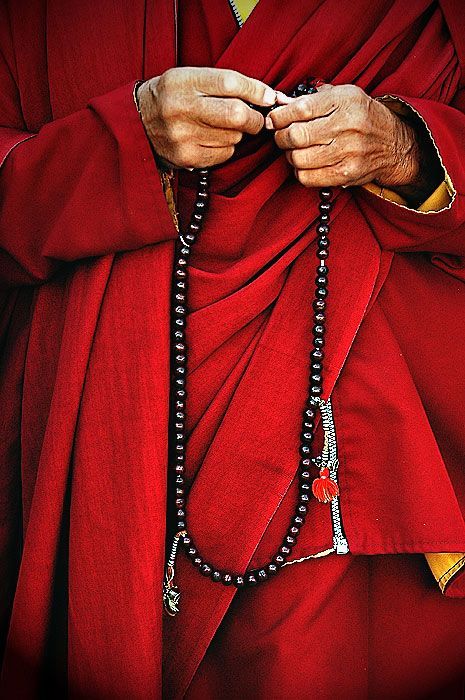
The Quest for Buddhism (110)
Buddhist cosmology
Brahmaviharas - the meditation on compassion (Ref)
Appamanna (4 immeasurable minds) are part of the 40 Karmasthana (a total of 40 meditation objects). It refers to having a calm mind, without undue worry and without any animosity or enmity towards other lives. Also called Brahmavihāra or 4 Brahma practices.
The term appamanna refers to the 'innumerable number of sentient beings' or 'the complete fulfilment without reserve of compassion with regard to the individual sentient beings subject to it'.
The Buddhist usage of the brahma-vihara originally referred to an awakened state of mind, and a concrete attitude towards other beings which was equal to "living with Brahman" here and now. The later tradition took those descriptions too literally, linking them to cosmology and understanding them as "living with Brahman" by rebirth in the Brahma-world.
The brahmaviharas (sublime attitudes, lit. "abodes of brahma") are a series of 4 Buddhist virtues and the meditation practices made to cultivate them. They are:
Loving-kindness (Pali: metta, Skt: maitri) is the mind active good will towards all, the mind for the others' at ease.
Compassion (Pali,Skt: karuna) results from metta, it is identifying the suffering of others as one's own, the mind that wants to remove the suffering of others.
Sympathetic joy (Pali,Skt: mudita): is the feeling of joy because others are happy, even if one did not contribute to it, it is a form of sympathetic joy.
Equanimity (Pāli: upekkha, Skt: upeksa): is even-mindedness and serenity, treating everyone impartially.
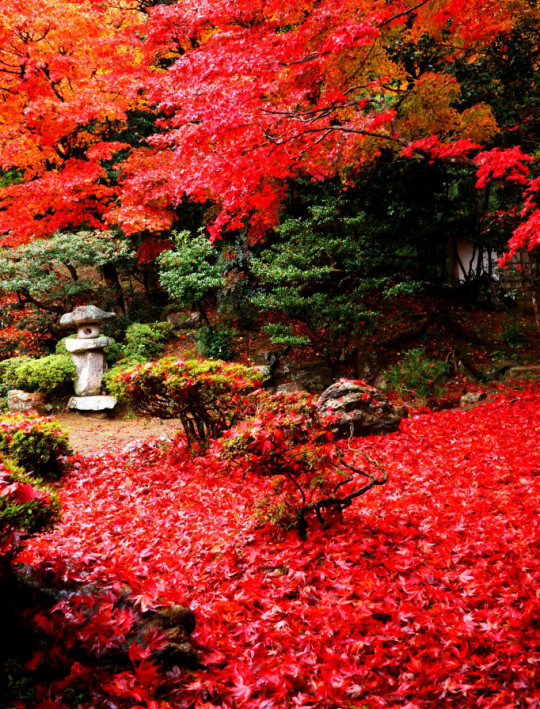
仏教の探求 (110)
仏教の宇宙論
四無量心 (しむりょうしん) 〜慈悲の瞑想(参照)
四無量心 (しむりょうしん、梵: アプラマーニャ, 巴: アッパマナー) とは、止 (し、サマタ瞑想) の対象である四十業処 (ごうしょ、巴:カンマッタ-ナ、梵: カルマスターナ、全部で40種の瞑想対象のこと)の一部。他の生命に対する自他怨親なく平等で、過度の心配などのない、落ち着いた気持ちを持つことをいう。 四梵住 (しぼんじゅう、梵,巴:ブラフマーヴィハーラ)、四梵行(しぼんぎょう)ともいう。
無量 (アッパマナー)というのは、「対象となる衆生が無数であること」あるいは「対象とする個々の有情(うじょう)について、慈悲の心で余すことなく完全に満たす」という遍満無量(へんまんむりょう、巴: ファラナ・アッパマナー)の観点である。
仏教の四梵住 (しぼんじゅう、梵,巴:ブラフマーヴィハーラ)は、元来、覚醒した心の状態や、今ここで「梵天 (ぼんてん, 巴: ブラフマー)とともに生きる」ことと等しい、他の存在に対する具体的な態度に言及するものであった。しかし、後世の伝統は、その記述を文字通りに受け取り、宇宙論と結びつけて、梵天界 (ブラフマー・ロカ)に生まれ変わることによって「梵天とともに生きる」と理解したのである。
ブラフマーヴィハーラ (四梵住:しぼんじゅう、崇高な態度の意、直訳すると「梵天の住処」) は、仏教の四つの徳目とそれを培うためになされる一連の瞑想修行のことである。四つの無量心は:
慈無量心 (じ、巴:メッター、梵: マイトリー) とは「慈しみ」、万物に対する積極的な善意のこと、相手の楽を望む心。
悲無量心 (ひ、巴: 梵: カルナー) とは「憐れみ」、慈無量心から生じ、他人の苦しみを自分の苦しみとして認識すること、苦を抜いてあげたいと思う心。
喜無量心 (梵、巴: ムディター) とは「喜び」、相手の幸福を共に喜ぶ心、共感的喜びの一形態である。
捨無量心 (しゃ、巴: ウペッカー、梵: ウペクシャー) とは「平静・平常心」、相手に対する平静で落ち着いた心、誰に対しても公平に接すること。動揺しない落ち着いた心を指す。
#brahmaviharas#meditation#meditation on compassion#zen#mindfulness#buddhism#buddhist cosmology#wisdom#philosophy#nature#autumn#art
128 notes
·
View notes
Text
Book of the Day - Living Kindness
Today’s Book of the Day is Living Kindness – Metta practice for the whole of our lives, written by Kevin Griffin in 2022, and published by Shambhala Publications.
Kevin Griffin is a leader in the mindful movement and a Dharma Leader and Teacher at Spirit Rock Meditation Center. He is the author of five previous books, including One Breath at a Time. He has studied with the leading Western…
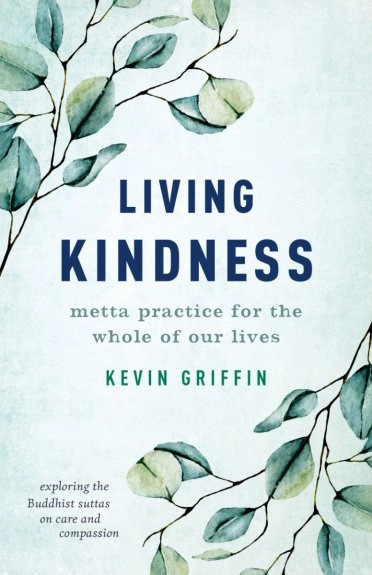
View On WordPress
#Brahmaviharas#Buddhism#Kevin Griffin#kindness#Living Kindness#meditation#Metta#MMQG#MMQG Meditation#Raffaello Palandri#Shambhala#Shambhala Publications
18 notes
·
View notes
Text
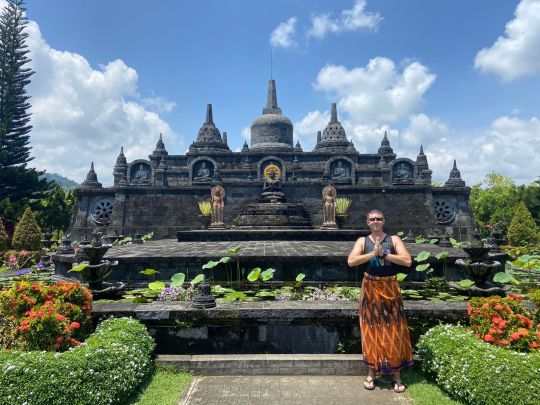
Brahmavihara-Arama - this is the center piece of the temple complex, a small replica of Borobudur. There is a meditation hall inside the building.
0 notes
Photo
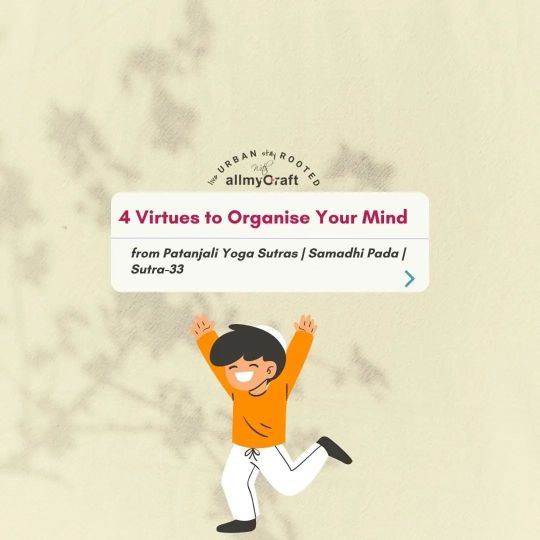
The essence of absolute #organisedmind is through the four Brahmavihāras, the four sublime attitudes, present both in the teachings of Buddhism and Yoga (as presented in Patañjali’s Yoga Sutra I.33) is as मैत्रीकरुणामुदितोपेक्षाणां सुखदुःखपुण्यापुण्यविषयाणां भावनातश्चित्तप्रसादनम्॥३३॥ maitrī karuṇā mudito-pekṣāṇāṁ-sukha-duḥkha puṇya-apuṇya-viṣayāṇāṁ bhāvanātaḥ citta-prasādanam ॥33॥ “The mind becomes clarified by cultivating attitudes of friendliness, compassion, gladness and indifference respectively towards happiness, misery, virtue and vice. I.33 #patanjaliyogasutras #brahmavihara #mudita #joy #justorganiseyourself #liveURBAN #stayROOTED #allmyCraft https://www.instagram.com/p/ConHDljSmGk/?igshid=NGJjMDIxMWI=
#organisedmind#patanjaliyogasutras#brahmavihara#mudita#joy#justorganiseyourself#liveurban#stayrooted#allmycraft
0 notes
Text
Il cammino della liberazione del cuore - Sharon Salzberg
Il cammino della liberazione del cuore – Sharon Salzberg
Qual è la via più semplice e immediata per superare il senso di ricorrente isolamento che di tanto in tanto ci sovviene come un’ombra melliflua che ci pedina dappresso inclemente? Credo che siffatta persistente sensazione sia una sorta di richiamo, un mezzo drastico e spiccio, un escamotage che la coscienza medesima adotta per rimandarci di continuo a noi stessi, per risvegliare, dunque, la…

View On WordPress
#amore#brahmavihara#buddha#buddhismo#cammino#compassione#concentrazione#connessione#consapevolezza#cuore#equanimità#felicità#gioia#karuna#liberazione#meditare#meditazione#metta#mudita#pratica#risorse#saggezza#Sharon Salzberg#sofferenza#spiritualità#unione#upekka#verità
1 note
·
View note
Text
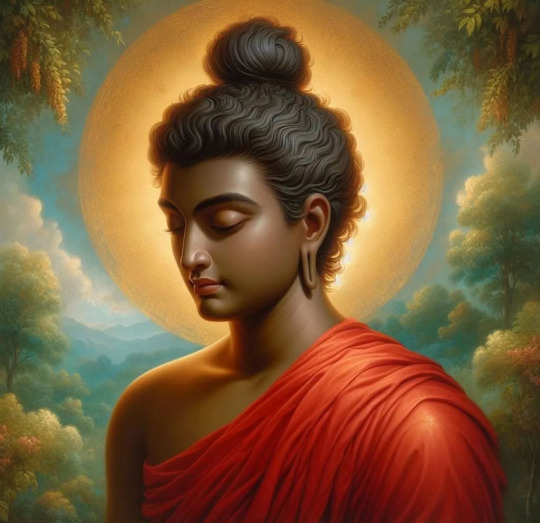
The Brahmavihara
Also called the four immeasurables, the brahmavihara comprise a quartet of virtues that illuminate the path to a more compassionate and harmonious existence, paired with meditation methods crafted for their enrichment.
1. Metta (Loving-Kindness):
In a world often overshadowed by discord, Metta encourages us to radiate boundless love and goodwill towards all beings. Imagine a heart overflowing with warmth, extending compassion indiscriminately. As we cultivate loving-kindness within, we become beacons of positivity, fostering connections that transcend boundaries.
2. Karuna (Compassion):
Karuna beckons us to embrace the suffering of others with an open heart. It's a call to action, inspiring us to alleviate pain and contribute to the well-being of those around us.
Compassion isn't passive; it's the catalyst for positive change. In extending a helping hand, we find purpose and forge bonds that bind us in our shared humanity.
3. Mudita (Empathetic Joy):
Mudita invites us to celebrate the joy of others sincerely.
When we eradicate jealousy and self-centeredness, we create space for shared happiness. Rejoicing in the success and good fortune of others fosters a sense of interconnectedness, turning our hearts into reservoirs of joy that overflow into the lives of those we encounter.
4.. Upekkha (Equanimity):
Upekkha encourages a balanced and serene mind amidst life's fluctuations. It's about maintaining equanimity in the face of joy and sorrow, success and failure. By cultivating inner stability, we navigate the unpredictable currents of life with grace, fostering resilience and wisdom.
May Metta be the guiding force in our interactions, Karuna the catalyst for positive change, Mudita the source of shared joy, and Upekkha the anchor in life's ebb and flow.
10 notes
·
View notes
Text
Chapter Notes | kachigaaru; to be worthy
you can read the newest chapter here!
This is a full length chapter, not split up into two parts! While there was conceivably a place I could split it, I didn't want the chapter separated. It felt better read together. There were actually more scenes I wanted to add, but they've been pushed into the next chapter instead.
Let's start of with some translations!
oyakata-sama
a traditional way to say "Master". I refer to Kagaya in prose as "master", however the character directly address him as oyakata-sama. This choice was made to distinguish other characters that are called master - for example, someone may call Akihito "Master" due to him being master of estate and a hashira, whereas oyakata-sama is reserved for the leader of the corps. Oyakata is traditionally used as a title for a father figure or provider. It's also very commonly used nowadays for sumo coaches.
nembutsu
also known in Chinese as nianfo, nembutsu is essentially a repetitive meditation in Pure Land Buddhism, commonly of the name of Amida Butsu (also known as Amitabha).
南・無・阿・弥・陀・仏 | namu amida butsu
one of the most common nembutsu - it essentially translates to "Praise Amida Butsu" or "I am aware of Amida Butsu" or even "I bow to Amida Butsu"
kyoudai sakazuki
a practice in which two people will swear over cups of sake to be sword brothers. the two people are not related, but after the practice, regard each other the same as true born family members. kyoudai means sibling to indicate the relationship - there are versions of this ceremony for parent-child relationships too. nowadays this is very commonly associated as a yakuza tradition or initiation.
shimuryoushin
also known as the brahmavihara, it is the four immeasurable virtues practiced and cultivated in Buddhism; loving-kindness or benevolence (mettā), compassion (karuṇā), empathetic joy (muditā), equanimity (upekkhā)
tsume-eri
the style of high western collar often seen in gakuran style uniforms. its the style of the demon slayer uniform.
tattsuke-hakama
the type of hakama worn for the corps' uniform where the bottom hem is bound into the kyahan shin guards.
umanori
essentially is means "horse-riding". umanori-hakama are divided/split hakama with two pant legs designed for riding horses. undivided hakama are full skirts with no pant legs and are worn over kimono, which can't accomodate a "split" or "divide".
keikogi
a type of garb commonly used for juudo or other martial arts practitioners. also known as a dougi or keigi. if you've ever seen a juudo match, they are likely wearing a keikogi.
waraji
traditional straw-woven sandals. similar to zoori, but because they are completed straw, they are significantly more flexible.
furisode
a long, flowing style of sleeve seen on kimono. generally furisode sleeves are considered formal and are reserved for young unmarried women (but not always!)
Next, a quick summary of the currently serving Hashira as of the beginning of Summer 1908.
Yanagizawa Yoriha
Dragon Hashira, 38 years old. She is the eldest serving hashira and de facto "leader" due to being in a position of seniority over the others. Has tanned skin marred with battle scars and shaved blond hair bar her side-swept bangs which cover her left eye and facial scarring. Has a very tall, muscular build.
Rengoku Shinjurou
Flame Hashira, 36 years old. Akihito's sworn brother. The Master of the Chrysanthemum Estate and Head of the Rengoku Family. He has lost himself to alcoholism since the death of his beloved wife, Ruka, one year ago. Unruly blonde hair with ends dipped in red, and vibrant red-and-gold eyes.
Urokodaki Ritsunoko
Water Hashira, 35 years old. She is Urokodaki Sakonji's only child and lives with Sen Watanobu at the Forest Estate. Long blue-black hair kept in a high tail, and bright sky blue eyes. She always wears a white kitsune mask with blue and red paint. She is Giyuu's master.
Sen Watanobu
Ice Hashira, 29 years old. He was once the tsuguko of Urokodaki Shouhaku, who was Sakonji's elder brother. After Shouhaku's death, he was too young to inherit his title, so continued training under Ritsunoko until promotion. Lives with her at the Forest Estate. Wavy navy hair kept in a low tail, and sad blue eyes.
Kakutani Akihito
Wind Hashira, 35 years old. Shinjurou's sworn brother. Master of the Spring Estate and Head of the Kakutani Family. Long, straight black hair with green eyes, the picture of nobility. Although he is older than Watanobu, he was promoted after the boy, making Watanobu his senior in rank - despite this he commonly sits with Yoriha and Shinjurou out of respect for his seniority in age and circumstance.
Himejima Gyoumei
Stone Hashira, 20 years old. A former monk turned demon slayer. He lives with Yanagizawa Yoriha at the Steel Estate. You should know this guy :')
Kakutani Yoake
Crane Hashira, 15 years old. Heir to the Spring Estate and daughter of the last Wind Hashira, Kakutani Atsuhito. Very long black hair kept in a low dolphin tail, gold eyes. She is the youngest currently serving hashira and the only practitioner of her esoteric breathing art.
Uzui Tengen
Sound Hashira, 16 years old. A former shinobi turned demon slayer. You should also know this guy :')
And that's all for now!
0 notes
Text
#psychic#tarot cards#tarot reading#psychic readers#tarot#psychic readings#tarot deck#psychic advice#love#master psychic#meditation#meditation book#witch books#witchcraft#witchblr#witches#witchy vibes#witch aesthetic#pagan
0 notes
Text
The Upeksha Query Blog
The Upeksha Query is a social, conscious and artistically driven organization. Our focus is to foster expansive ideas investigating consciousness in all forms. UQ seeks to nurture relationships and collaboration with creative thinkers from all parts of the globe. Cultural heritage preservation and producing new artistic ideas and research are at the center of what we do.
“Upeksha in Sanskrit or Upekkha in Pali means equanimity, non-attachment, even-mindedness or letting go. Upeksha does not mean indifference. It is the fourth element of true love and has as its seed the wisdom of equality that removes all boundaries, discrimination and prejudices while leading to the sublime unity where there is no self and no other; without Upeksha, love becomes possessive. Equanimity or Upeksha grows out of mindfulness, then one becomes master of every situation no matter what the situation is without it one cannot take anything in one’s stride; its significance is that one really lives unconditionally.
The understanding that our happiness and that of others is inseparable moves us directly into the fourth Brahmavihara, Upeksha. Equanimity of Upeksha carries the ability to take a large view and to look over the whole situation not bound by one side or the other, its near-enemy is in-difference which is difficult to recognise because it masquerades on the surface as even-mindedness; indifference causes retreat to a form of denial like repression, don’t care-can’t be bothered attitude.”
0 notes
Text
The Four Living Abodes
Remember these four words/phrases:
loving kindness
compassion
empathetic joy
equanimity
Add these four to your meditation practice. After you breathe and quiet your mind take first a moment and hold the words loving kindness in focus and feel that feeling and direct it toward one deserving and then, to the best you are able to another less deserving. Feel compassion toward one who suffers. Feel joy for the good fortune and success of another and practice calm, that serene calm we know as equanimity, the calm that allows a person’s spirit to unfold.
54 notes
·
View notes
Photo
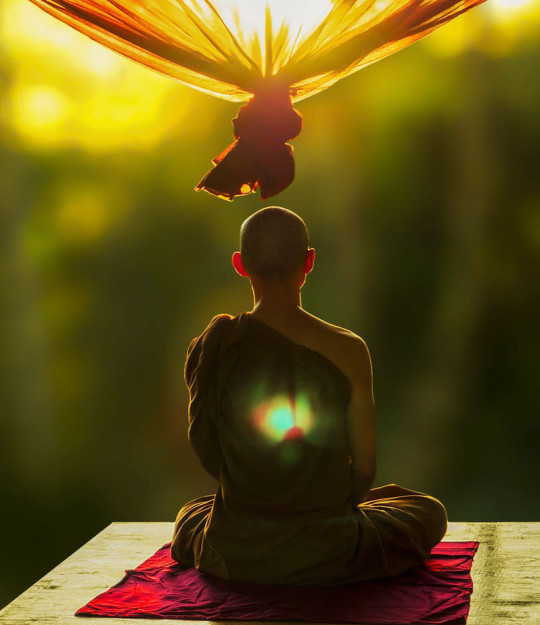
The Quest for Buddhism (112)
Buddhist cosmology
Brahmaviharas – From the teachings preached by the Buddha to his son Rahula (Ref)
“O Rahula, deepen your meditation on loving-kindness. Because if you deepen your meditation on loving-kindness, any resentment, hatred will disappear.
O Rahula, deepen your meditation on compassion. Because if you deepen your meditation on compassion, all harmful intentions will disappear.
O Rahula, deepen your meditation on sympathetic joy. Because if you deepen your meditation on sympathetic joy, any dissatisfaction will disappear.
O Rahula, deepen your meditation of equanimity. Because if you deepen your meditation on equanimity, any anger will disappear.”
Excerpt from Maha-rahulovada-sutta in Majjhima Nikaya (MN)]

仏教の探求 (112)
仏教の宇宙論
四無量心 (しむりょうしん) 〜ブッダが息子のラーフラ (羅睺羅:らごら参照)に説いた教法より
”ラーフラよ、慈の瞑想を深めなさい。なぜなら、慈の瞑想を深めれば、どんな瞋恚 (しんに: 憎悪)も消えてしまうからである。
ラーフラよ、悲の瞑想を深めなさい。なぜなら、悲の瞑想を深めれば、どんな害意も消えてしまうからである。
ラーフラよ、喜の瞑想を深めなさい。なぜなら、喜の瞑想を深めれば、どんな不満も消えてしまうからである。
ラーフラよ、捨の瞑想を深めなさい。なぜなら、捨の瞑想を深めれば、どんな怒りも消えてしまうからである。”
中部 (ちゅうぶ、巴: マッジマ・ニカーヤ) の大ラーフラ教誡経 (だいラーフラきょうかいきょう、巴:マハーラーフローヴァーダ・スッタ) からの抜粋
#brahmaviharas#meditation on compassion#buddhism#buddha#rahula#son of buddha#meditation#eightfold path#maha-rahulovada-sutta#nature#art#philosophy#buddha's teachings
136 notes
·
View notes
Text

I made a new shrine for the last night of the retreat.
9 notes
·
View notes
Text
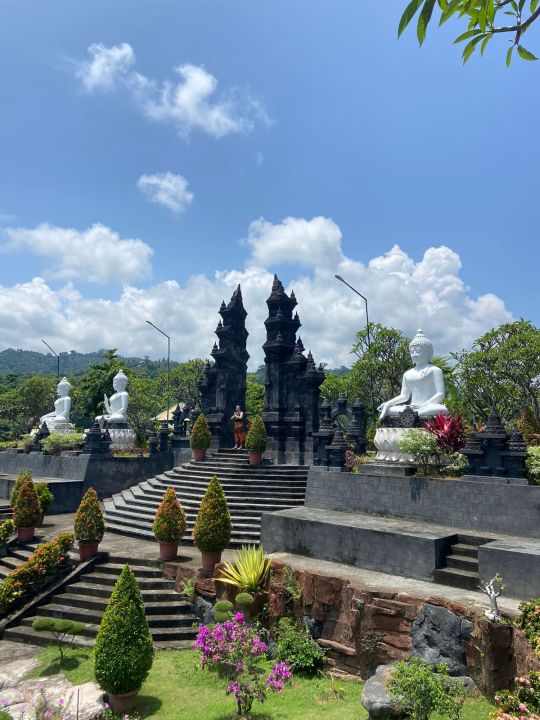
Brahmavihara Arama - The largest and most beautiful Buddhist temple in Bali, the view from the top was amazing, I could see the ocean clearly. This was one of two Buddhist temples that I aimed to visit during this short trip to Singaraja.
0 notes
Text
Qualities of the Heart | Video
Qualities of the Heart | Video
This is a video I recorded about the Yoga Sutra and the Four Immeasurables.
What if we center our lives in compassion and kindness?
Further Reading:
Four Immeasurable Minds
========================================================
if you loved this post and you want to see a lot more like it, click below
Tip Jar
View On WordPress
1 note
·
View note
Photo

So challenging to do at times…and essential for calming the powerful energies of reactivity in mind heart when we tend and befriend these energies by not feeding them but rather finding the place of stillness within we can respond wisely and compassionately. #calmingtheenergy #equanimity #brahmaviharas #breathasmedicine #mindfulness (at West Broward Insight Meditation Community) https://www.instagram.com/p/CSo0QcEsoLL/?utm_medium=tumblr
0 notes